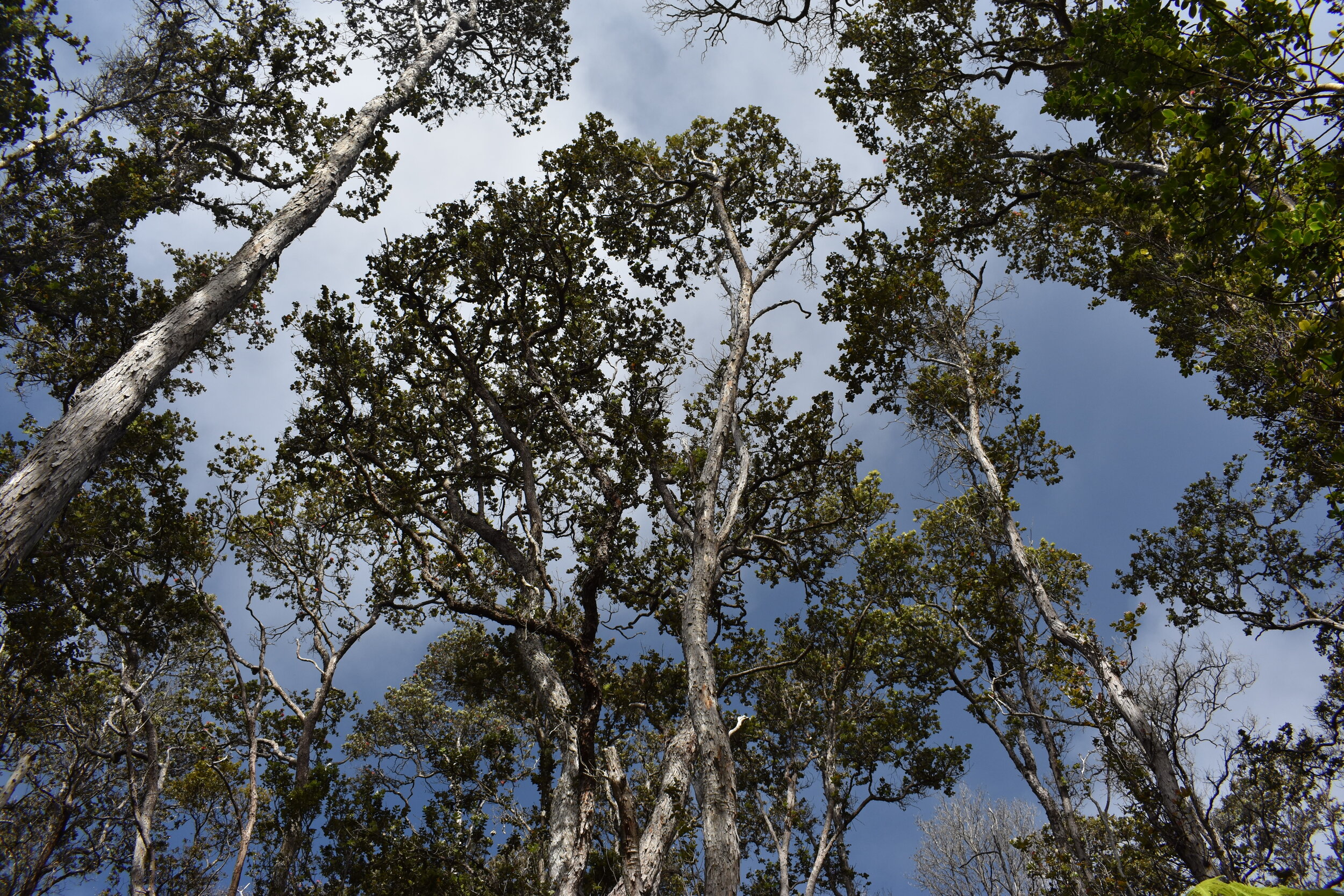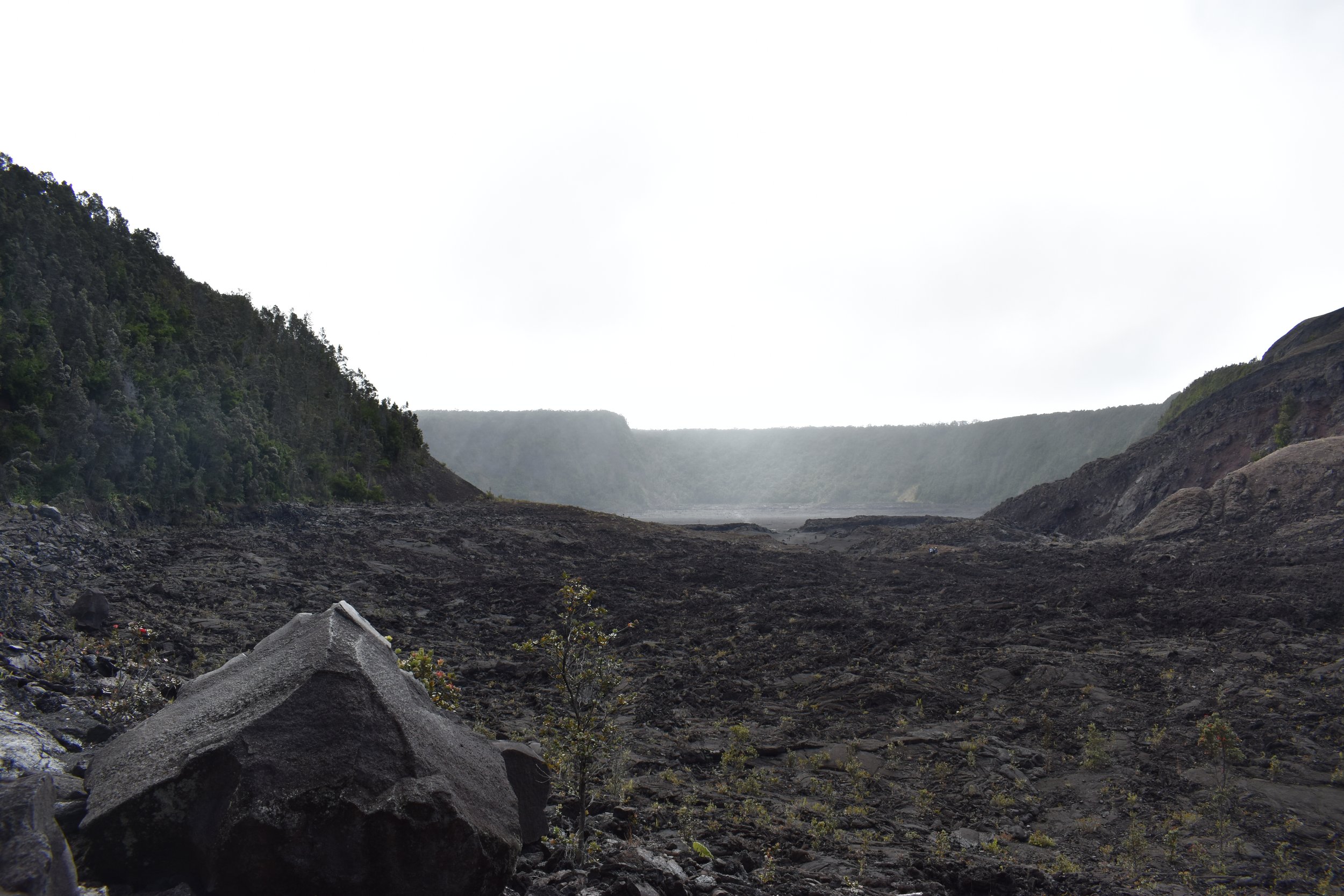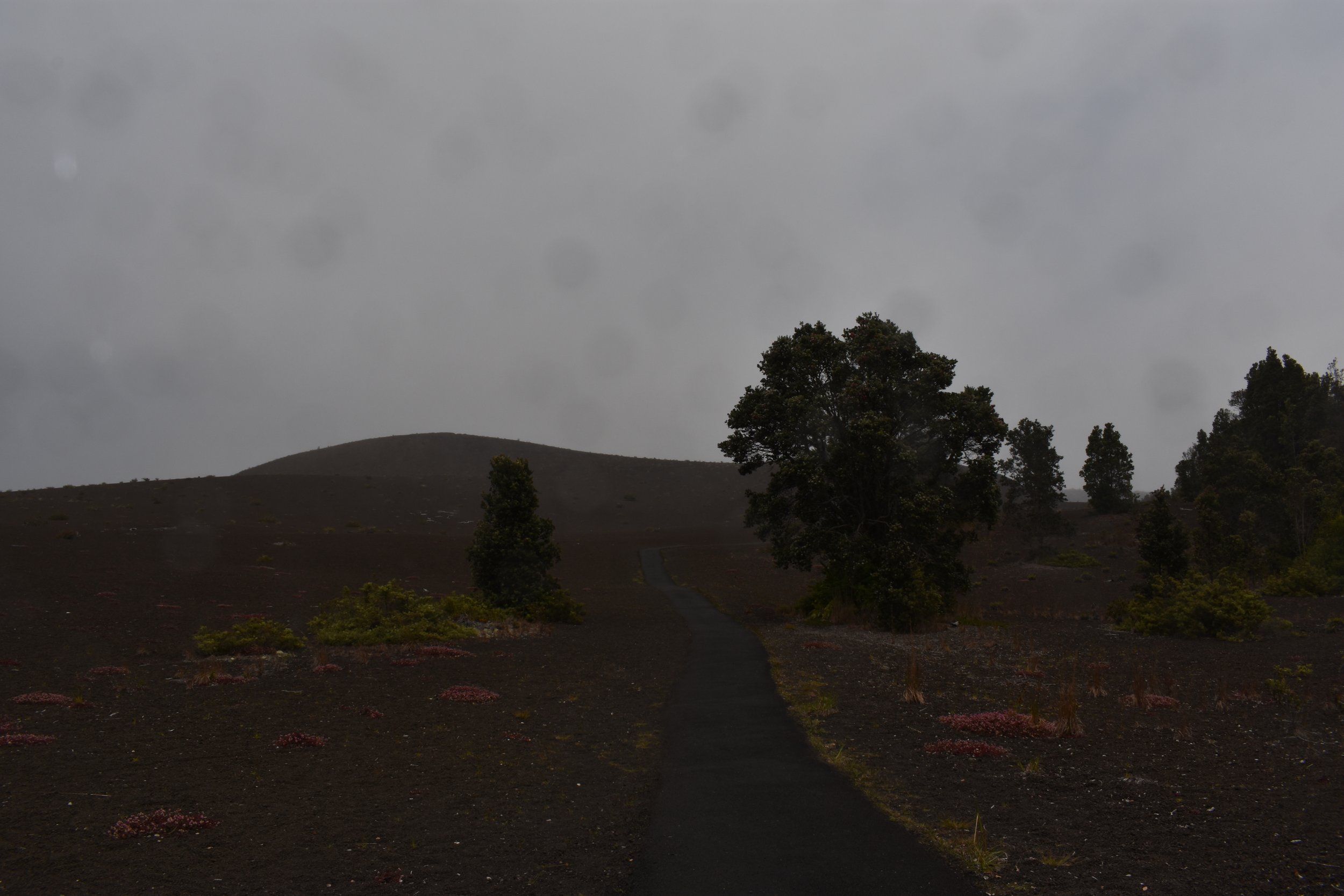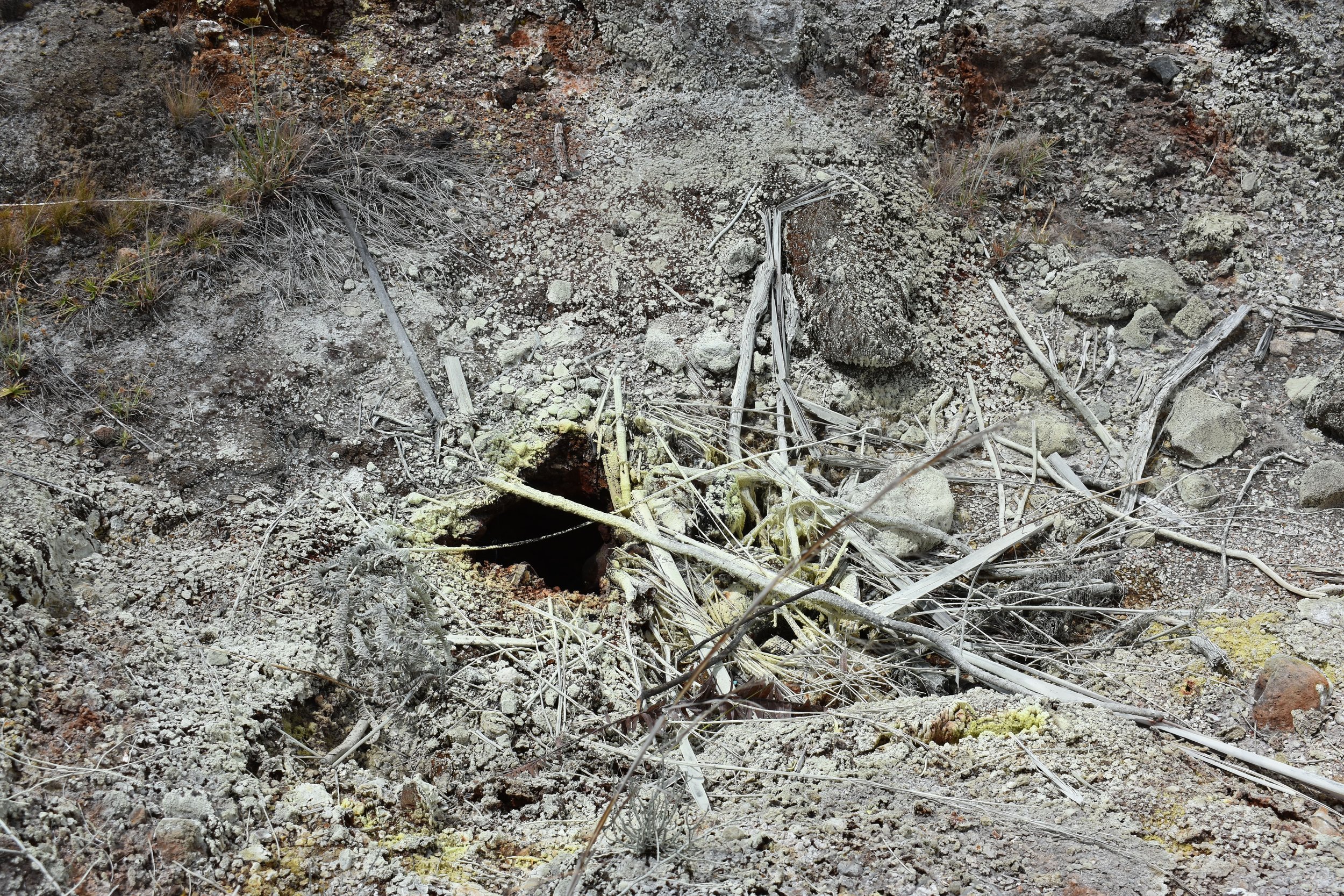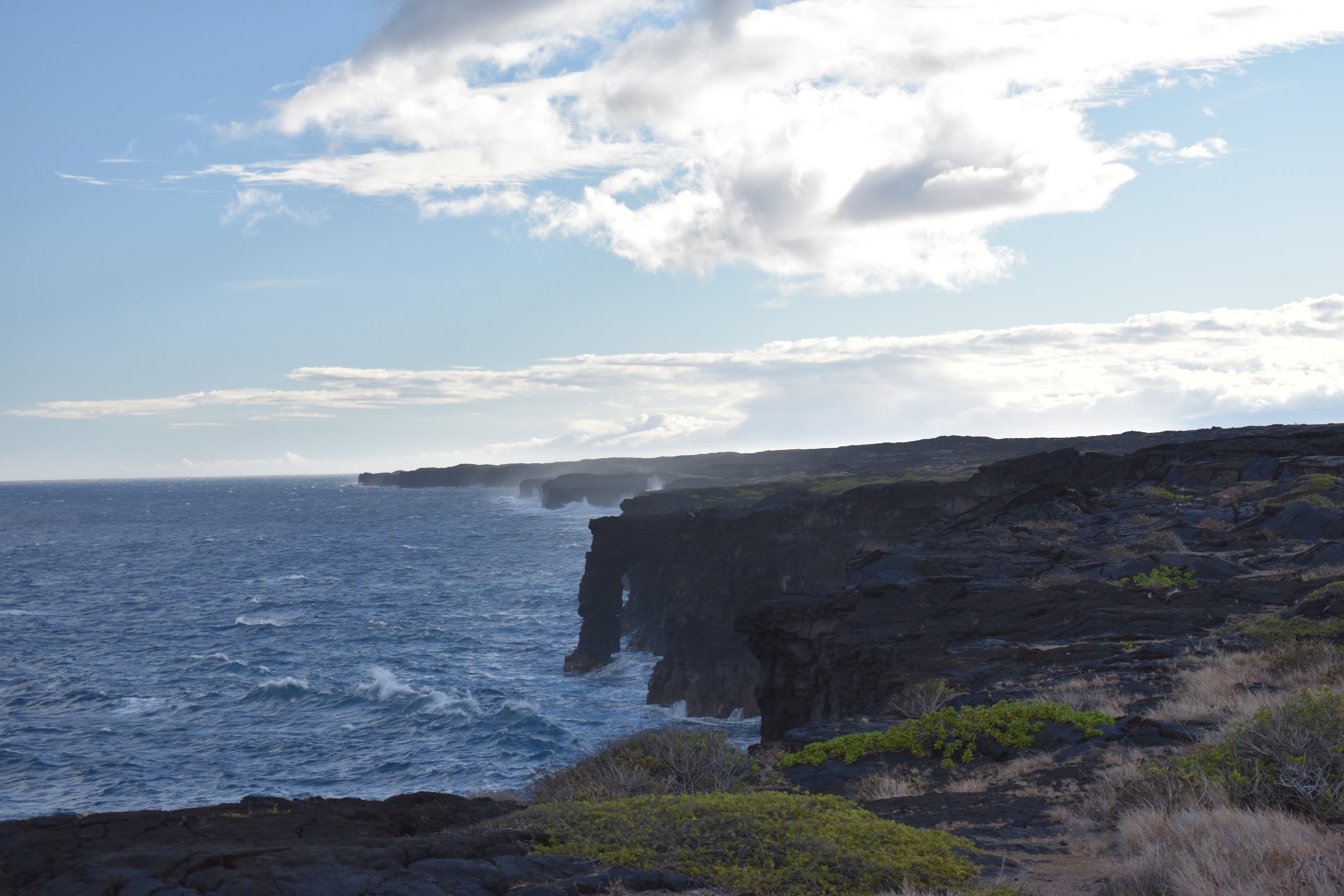Big Island, Hawai'i (Day Three): Volcanoes National Park
If you missed Day Two of our honeymoon trip to Hawaii, go read that here.
On our third day on the Big Island, we decided to do what we do best and visit a national park. Volcanoes National Park includes some of the most unique topography we’ve ever hiked, as well as two of the most active volcanoes in the world, Kilauea and Mauna Loa. Kilauea had been erupting from December to May of 2021, but there was no active lava flowing in the park when we visited in July, much to my husband’s chagrin. As for me, I was glad I didn’t need to worry about road closures or emergency evacuations!
Our first hike was the 3.3 mile loop from the Kilauea Iki overlook to the solidified lava lake on the floor of volcano’s crater. Once we’d made it to the black lava rock, fissured and broken up, desolate but beautiful, it felt like we’d made it to another planet.
Our second hike was Nāhuku (Thurston Lava Tube), a 500-year old lava tube where a river of 2000-degree lava once flowed and created a hollow cave-tube you can walk through. This lava tube was discovered in 1913 and tourists stole all the stalactite-like lava spikes that once hung from the ceiling. The tube is one of the most in-demand hikes at the park, so we combined this hike with Kilauea Iki to ensure we had parking.
Next, we did the easy Devastation Trail (1 mile), which takes you next to the Pu‘upua‘i cinder cone and through a landscape that is still being revegetated after the 1959 Kilauea Iki eruption buried it in cinder. Another easy hike we did was Ha‘akulamanu (Sulphur Banks), which was only 1.2 miles. This landscape was reminiscent of Yellowstone, being a volcanic area with colorful sulfur deposits on the rocks and thermal vents.
After hiking to some beautiful viewpoints, seeing some lizards, and getting a little sunburned, we decided to take a drive down Chain of Craters road before dinner. This 18.8 mile road stretches from Kilauea to the coast and takes you through lava flows, past craters and petroglyphs, and to a sea arch.
For dinner, we ate at The Rim at Volcano House, a restaurant built on the rim of the Kilauea caldera. It was one of our favorite meals we had on the Big Island, even disregarding the amazing view! If you’re lucky enough to visit when there are active lava flows (or even lava underneath the crusted-over lava lake), you might be able to see “the glow” reflecting in the mist rising off the floor of the caldera.
Up next: Hiking Waipi’o Valley - one of the steepest roads in the world!



